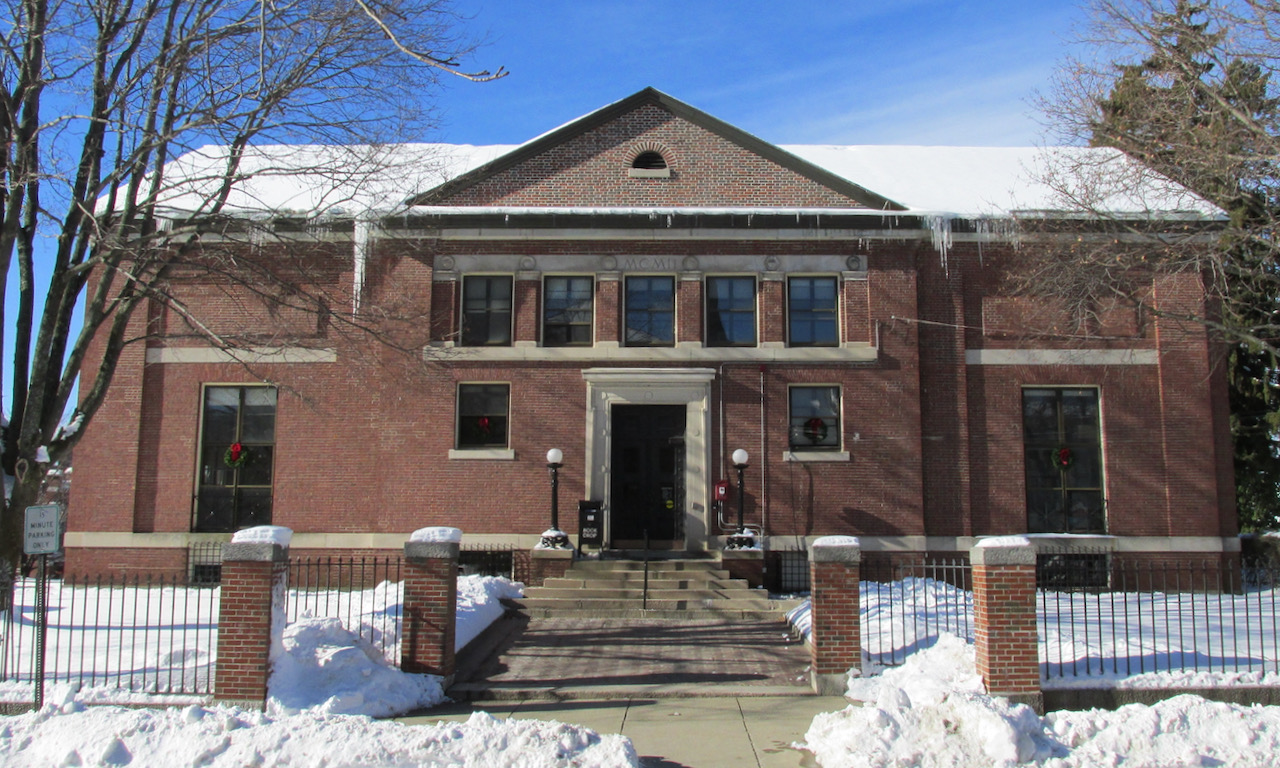Named in honor of Erastus Brigham Bigelow, its greatest benefactor, the Bigelow Free Public Library evolved from the Bigelow Mechanics Institute, founded in 1846 as a subscription library. When the Institute was dissolved, the Library Association was formed, eventually donating their resources to the Town of Clinton to form the Bigelow Free Public Library.
The library’s present site, at the corner of Walnut and Church Streets, was donated to the town and construction of the building was supported by funds from the Andrew Carnegie Foundation and George Weeks, a local citizen. It opened in 1902.
Built in the Greek Revival style of architecture, the building has many notable architectural features including an arched ceiling on the main floor built using the Guastavino method, which eliminated the need for steel and instead substituted genuine masonry. On the main floor is a frieze that is a reproduction of that of the west front of the Parthenon, a gift from Henry F. Bigelow. An architecturally rare three-story book stack area has glass floors and is a unique feature among libraries in Central Massachusetts.
The library building has remained basically unchanged since its dedication in 1903, aside from the addition of handicap access features including an elevator and renovated restrooms.


